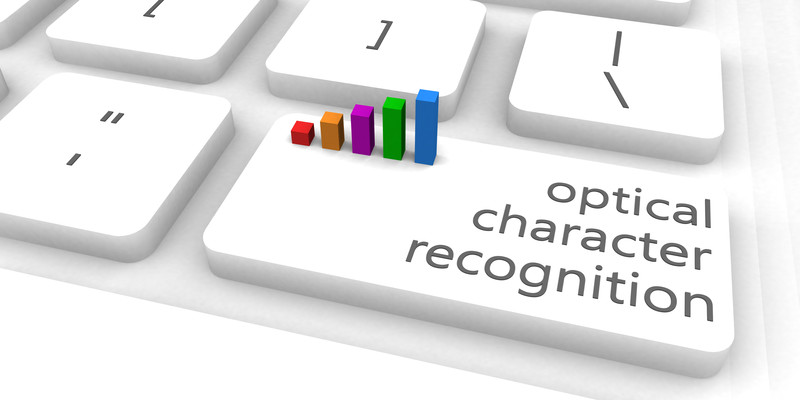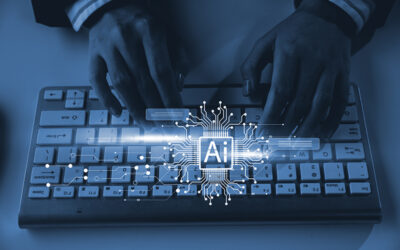Optical character recognition (OCR) is a technology that allows you to convert different types of documents, such as scanned paper documents, PDF files or images captured by a digital camera into editable and searchable data. Using advanced technology such as OCR and intelligent character recognition (ICR), an experienced document scanning company can convert documents such as photographs or artwork, brochures, resumes, application forms, payroll forms and colored text or black text on white paper into electronic format. OCR can recognize various kinds of text such as typed font, handwritten letters or printed text. In fact, many companies consider OCR as an essential technology for automating their workflows. The following are the ways in which this technology can help people work faster with minimal errors.
- Better invoice management – OCR allows the office staff members to import information from physical invoices and the OCR application detects the text on the page and transforms it into a digital format, thereby enabling better invoice management. This makes it possible for the people who work with invoices to have all the necessary information in one place and they no longer have to worry about losing paperwork. OCR technology also allows searching for keywords within the digitized material. This helps people save time when verifying payment-based specifics, such as what a client purchased and when the transaction happened. These advantages help avoid substantial amounts of manual search and minimize errors that may happen when people enter data by hand and make mistakes.
- Improving insurance claims and policy processing speed – Some business processes may be too complex, so it may be very difficult to streamline them without assistance from technology including OCR. OCR solutions can make data entry more efficient and categorize the data. A good example is that of a global insurance company that after realizing their inefficiencies were out of control, started to use an OCR tool to make improvements. Before using the OCR, the company experienced an estimated 24,000 data capture delays or stoppages per month, and these issues resulted in an approximate loss of $100 million in revenue each year. After using the OCR tool, the claims and policy processes improved substantially, making each one more efficient. This encouraged the company to roll out OCR technology in other departments as well.
- Accelerating work related to PDFs of scanned documents – The health care industry is one of the industries that regularly handle PDF documents, especially when considering the prevalence of faxed material. Having documents in a digital format makes storage more streamlined. However, working with PDFs is a slow process when keyword searching is not a native feature. Here is an example of how an OCR tool with certain features can be especially useful for certain teams. One project supported healthcare providers with searching through PDF content in Chrome and used OCR technology to do it. Users have to backfill data from PDF documents and do it very quickly without sacrificing quality. The New York-based health care company Oscar came up with a solution called DocStor OCR, which is more than 98% accurate in recognizing the extracted text. People using OCR technology had to deal with an average of 10,000 PDFs per day, and the average document was 10 pages long. With OCR, each document only took seven seconds to process, and the content within was mostly medical-related. The people who used the search functionality also reported that it significantly improved their efficiency. When considering adopting OCR technology, company leaders should determine which tasks are most complicated and use OCR to perform those tasks.
- Removing the issues from travel expenses documentation – People who travel frequently have to keep track of receipts related to their business excursions. They have to manually submit the details of these receipts into a portal overseen by someone in accounting. The issue occurs if the amounts are in different currencies and if people take care of expense documentation submissions outside of their usual work hours. This will reduce the amount of time to enjoy a healthy work-life balance. For instance, a heavy traveler spent as much as 60 minutes after each trip doing expenses. Therefore, the focus shifted to working on a smartphone-friendly OCR solution that would allow people to take pictures of their receipts with their phones and instantly approve or deny the information recognized by the technology and transferred into an app. Users reported that it took less than 15 minutes for them to enter expenses while using this system. As OCR technology automatically recognizes dates, amounts, currencies and merchants on each receipt, instead of typing everything, people only had to confirm that the app correctly interpreted the information. When companies have large percentages of employees who travel frequently, OCR technology can help them reduce expense-reporting headaches.
- Making Google drive more user-friendly – Most people are familiar with Google Drive and how it can support their workflows, especially when going paperless. It is possible to save files received in Gmail messages directly to Google Drive and you don’t have to print them out. In some cases, many of the OCR solutions needed specialized tools. But when people only need to do basic OCR tasks, they can handle those with Google Drive. The platform is equipped with a feature that can turn PDFs and photos into text shown in Google Docs. One of the drawbacks of this tool is that it will not retain some formatting including footnotes and charts. However, it does transfer characteristics such as the font type and size. This allows people to edit the text in Google Docs without relying on a separate specialized program. An example of this is, if someone wants to make changes to a PDF of an extensive restaurant menu, then they can do this with the help of this feature and also by editing the content in Google Docs. If a user want to import an image of an email sign-up list from a recent trade show featuring dozens of names, the Google Drive OCR recognition could help in transferring those contact details over to a digital format.
Optical character recognition solutions provided by document scanning companies are reliable and would help increase data entry efficiency by reducing errors caused by manual processes.
In our next blog, we’ll discuss the five OCR software tools that can help increase business productivity.




